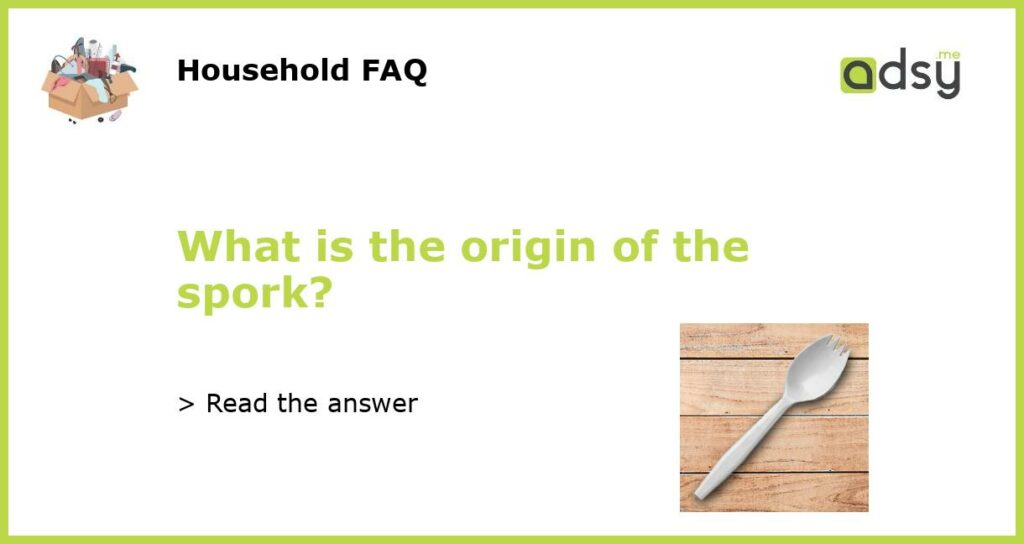The mysterious history of the spork
The spork, a hybrid utensil that combines the features of a spoon and a fork, has become a staple in many fast food restaurants and outdoor dining settings. But have you ever wondered where this curious eating tool originated? The history of the spork is shrouded in mystery, with no clear evidence of its exact origins.
18th-century precursors: Knorks and runcibles
While the term “spork” may not have been coined until the early 20th century, there were predecessors to this versatile utensil. In the 18th century, a similar fork-spoon hybrid known as the knork was used in England. The knork had a knife-like edge on one side, providing a cutting function in addition to its spoon-like bowl.
Another notable precursor to the spork was the runcible spoon, famously mentioned in Edward Lear’s 1871 poem, “The Owl and the Pussycat.” The runcible spoon is described as having a fork-like end and a spoon-like bowl, although its exact design is open to interpretation.
The modern spork emerges in the 20th century
While variations of fork-spoon hybrids existed prior to the 20th century, the term “spork” itself did not come into popular use until the early 1900s. The word “spork” is believed to be a combination of “spoon” and “fork,” reflecting the utensil’s dual functionality.
However, it wasn’t until the mid-20th century that the spork gained widespread recognition and popularity. It became a common utensil in military mess halls and was also adopted by airlines for in-flight meals due to its space-saving design. The convenience and versatility of the spork made it an ideal tool for situations where multiple utensils were deemed unnecessary.
The spork’s rise to cultural icon status
In recent decades, the spork has transcended its utilitarian function and has become a cultural icon. It has been featured in films, TV shows, and even has its own section in the Oxford English Dictionary. The spork’s simplicity and unconventional design have captured the imagination of people around the world.
Additionally, the spork has also become a symbol of sustainability and eco-friendly practices. As a single utensil that serves the purpose of both a spoon and a fork, the spork reduces the need for disposable cutlery, thus minimizing waste. Many eco-conscious individuals and organizations have embraced the spork as a tool for promoting a more sustainable lifestyle.
Sporks in the future: Innovations and possibilities
As technology and design continue to evolve, the spork is not exempt from innovation. Various companies and designers have introduced their own unique takes on the spork, experimenting with materials, shapes, and additional features.
For example, some modern sporks are made from lightweight and durable materials such as titanium, making them ideal for outdoor enthusiasts and backpackers. Others feature serrated edges, bottle openers, or even collapsible designs for easy storage.
With the growing popularity of the spork and its ongoing cultural relevance, it seems likely that this humble eating utensil will continue to evolve and adapt to the needs of the modern world. Whether it’s through technological advancements or creative reimaginations, the future of the spork holds endless possibilities.






